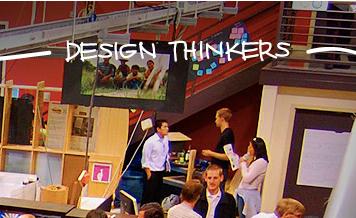Innovate: Return to Your Terrible Twos

We’re delighted to start our blog, Hybrid Reality, on Big Think. The blog is part of a multi-year research project examining human/technology co-evolution. We explore the implications of our complex and irreversible tango with science and technology in all aspects of our everyday life: how we educate ourselves, handle intimate relationships, perceive our self-worth, enhance ourselves physically, and collaborate as businesses and nations. We examine the new lifestyles and social structures that are just around the corner, and how we can make informed choices to remain in control of an uncertain future.
The question we get asked the most: what skills will we need to be successful in the future?
Well, we just returned from sunny San Francisco, where we attended the Economist Innovation Summit moderated by the charming and brilliant Vijay Vaitheeswaran. Innovation is the buzzword of the moment: we are told again and again that to be successful in the 21st century, you need to be innovative. Saying it repeatedly in business strategy meetings comes as easily as breathing to most executives. But if innovation is the key to disruption and future success, can it be taught or is it an innate ability? This was the question for those on the panel titled “The Hybrid Problem Solver.”
We are naturally curious and innovative as children, the panel concurred, but our ingenuity and creativity is beaten out of us by a dull and solely logic-based education curriculum. By the time we’re commuting to the daily drudgery of our 9-5 job, we’ve lost the ability to even make a stick-figure, let alone think visually and playfully about a complex problem. Without being creative, you cannot innovate!
In comes “Design Thinking”- a process by which we merge our analytical and creative skills in order to “think out of the box.” Design thinking is the Holy Grail of most product designers, including the ones who brought you the iPhone.
Innovation can be taught, said David Kelly, Head of the Stanford Institute of Design, by creating an environment which allows you to once again confidently experiment with ideas without fear of failure. Only then will we search for new choices instead of choosing amongst a mediocre set of choices before us. That’s all well and good, but how are you supposed to be creative at your job when failure can have serious consequences? The answer: acquire the confidence to innovate outside your job.
The choices before us are: go back to school (definitely not an MBA at a Business School, which the panelists emphasized further stifles innovation, but courses at a Design School), join a startup which is encouraged to experiment by venture capital money, or start a company in your down-time (it’s cheaper than ever these days to experiment and prototype products).
The fact is that innovative thinking is doesn’t come naturally to most people over 16 years anymore. So we have to proactively create the environment which brings our childhood awe and ingenuity back to us.
Ayesha and Parag Khanna explore human-technology co-evolution and its implications for society, business and politics at The Hybrid Reality Institute.
Image Courtesy Stanford Institute of Design




